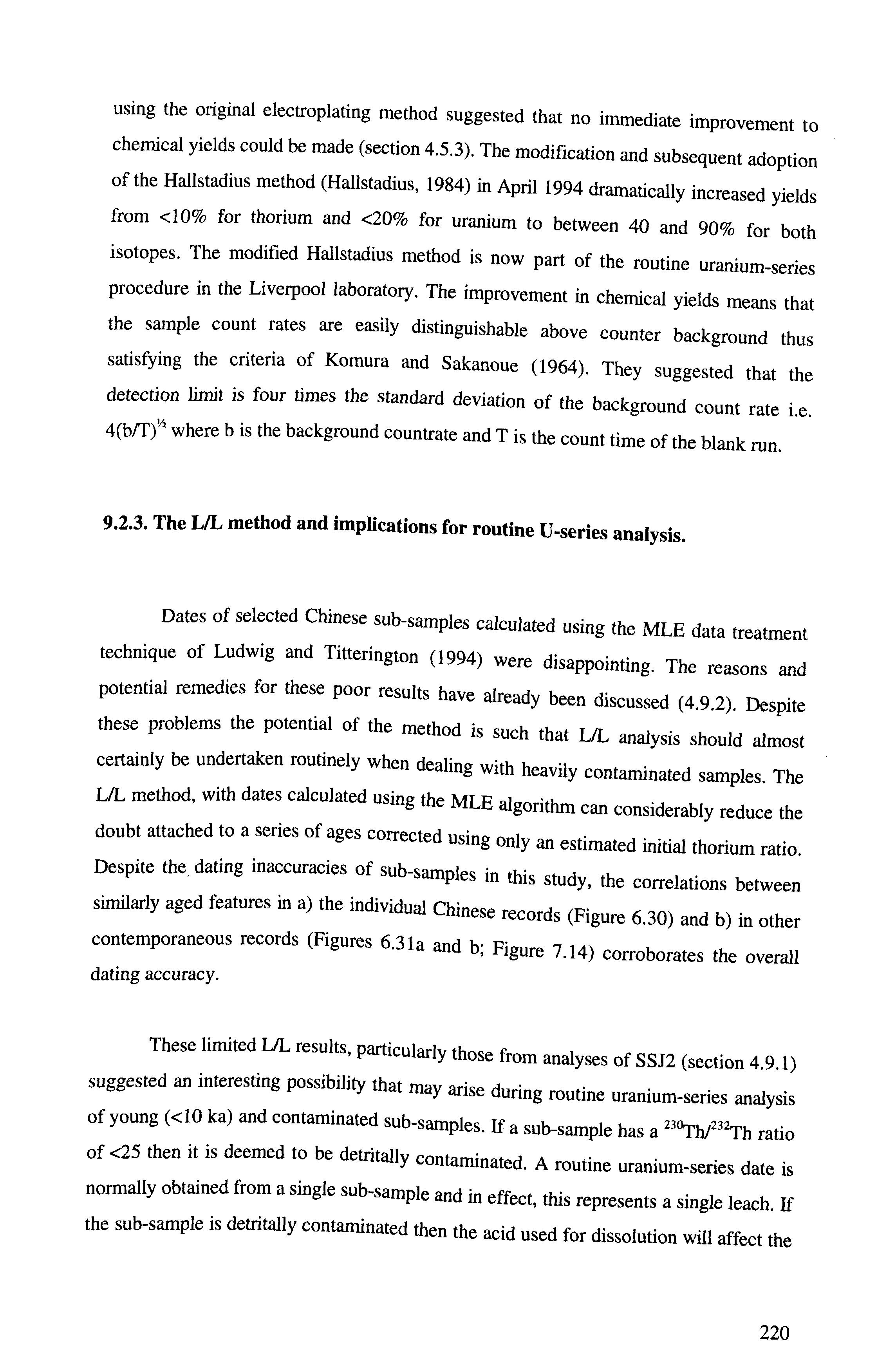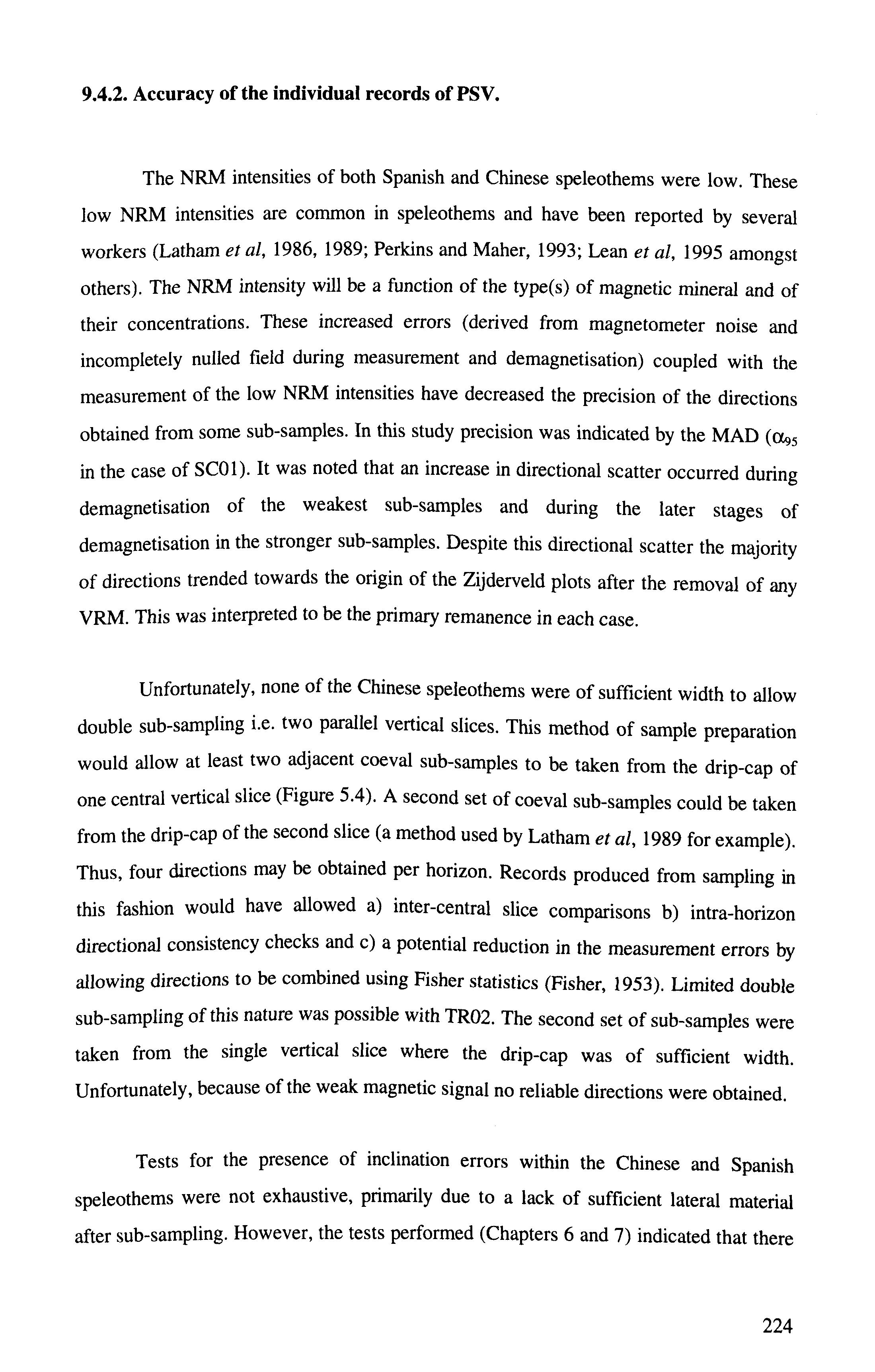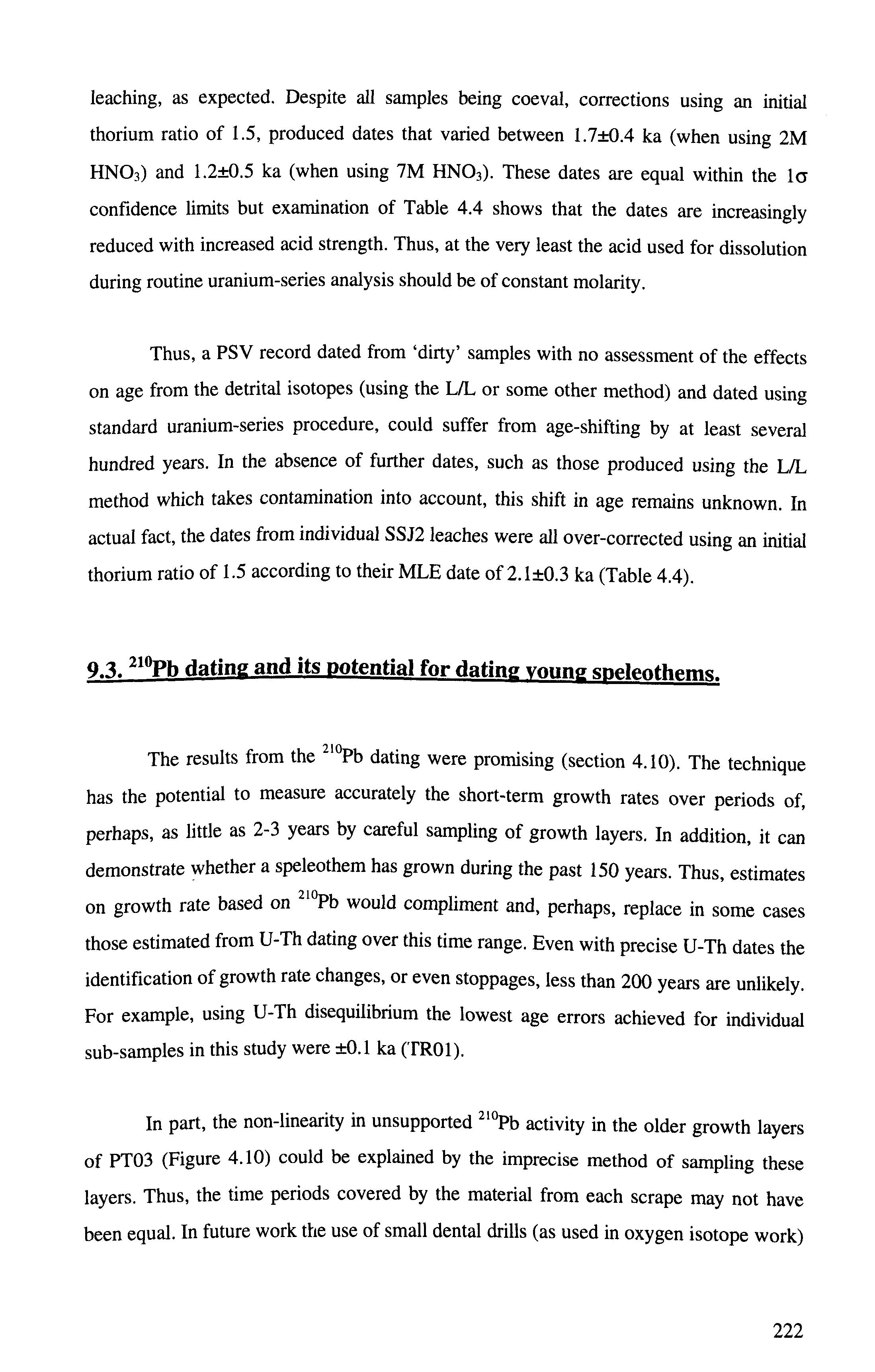
1 minute read
9.5.2. Remanence acquisition
There continues to be uncertainty as to the mode of acquisition of speleothem remanence. This arises from the inability to differentiate between CRM and DRM
components that contribute to the NRM. The relationship between weight % acid
Advertisement
insoluble detritus and NRM intensity is discussed in section 8.6. This method requires further systematic work but may have the potential to distinguish between a DRM or a CRM remanence.
All speleothems in this study have been taken from Hood-prone streamways. In
both Matienzo and Xingwen, large scale flooding occurs on a yearly basis. The results of
these Hoods are seen within each speleothem as finely laminated, alternating light and
dark growth layers. These dark layers represent growth immediately after a Hood which
cements detritus into the calcite matrix. The light layers represent growth after flood
detritus has been cemented in to the calcite matrix prior to the next flood. Therefore the
primary source for magnetic minerals within the calcite matrix is likely be firm, direct
deposition of magnetic minerals onto the speleothem surface from flood events- a DRM
Unforiunately, no material was taken from the cave floors in either Matienzo or Xingwen. It has, therefore, not been possible to rnmnc.™ ^pu^ioie to compare the magnetic properties of the cave floor sediments to the detritus within the speleothems
A second possible source for detrital mntnrioi • ,or aetntal material within the speleothems was from the drip-waters. Bull (1981) suggested that fissure« «/¡m;„,u , •assures within the overlying limestone, which cany the drip-waiers, can cany grains of up to 45pm. However, over the long periods
required for speleothem growth it is likely tha, these fissures become blocked and will
subsequently filter-out MD grains (Latham and Ford 199ft t n t n . f ,. • ■ w u, w v i h In the future, examination of the magnetic properties of surface «nils i e solls above known speleothems and their drip waters may go some way to illustrate which maorwi« „ • .mcn magnetic grain types and sizes are carried by this mechanism. Latham (1981) found that th^ •uuu mat the overlying soils were the source for iron oxyhydroxides within speleothems in some caves








